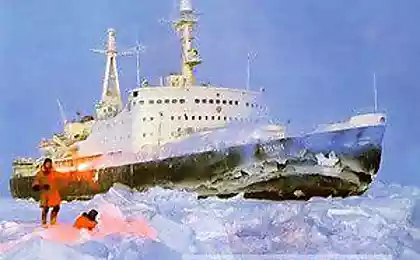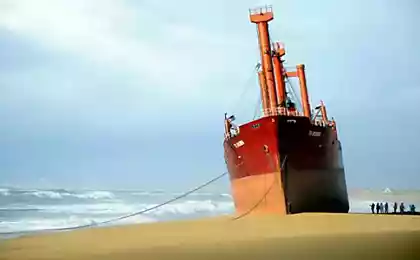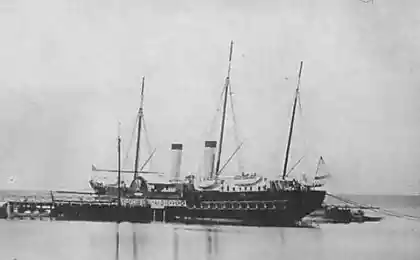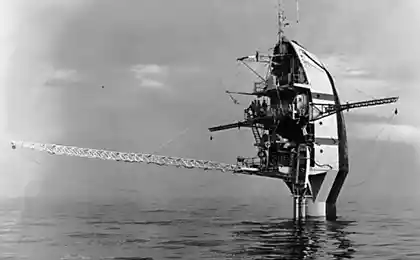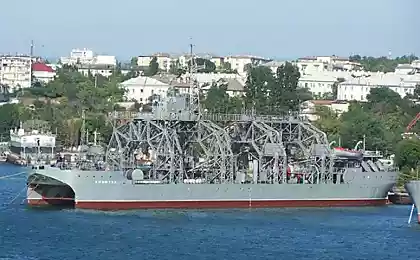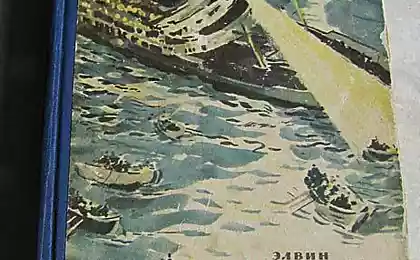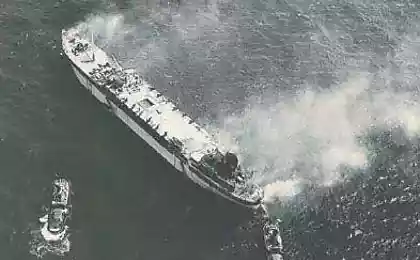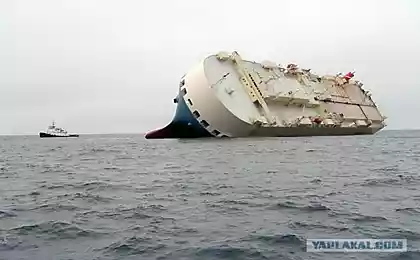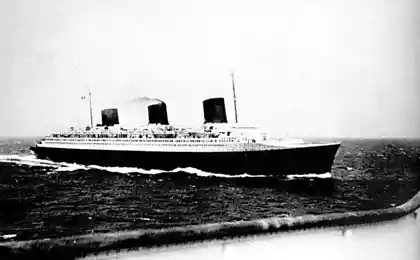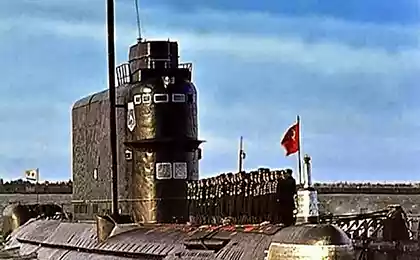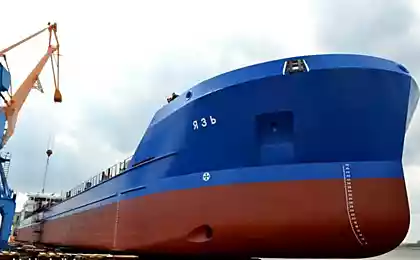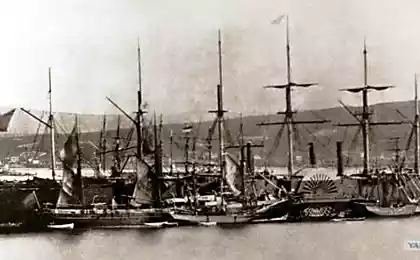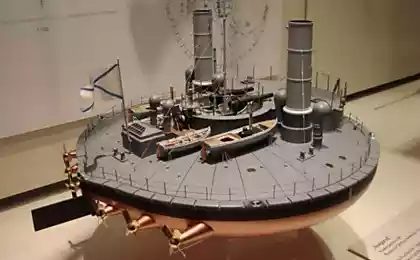763
Why drown vessel
It was learned that the Russian army flooded the old ship "Ochakov" in order to block access to several Ukrainian ships from Lake Donuzlav in the Crimea, where they are now. Such actions in the history of our fleet have occurred repeatedly, as in the military history of other countries. Today we tell you about five of the most famous cases of flooding warships different states for different reasons.
9 photo.
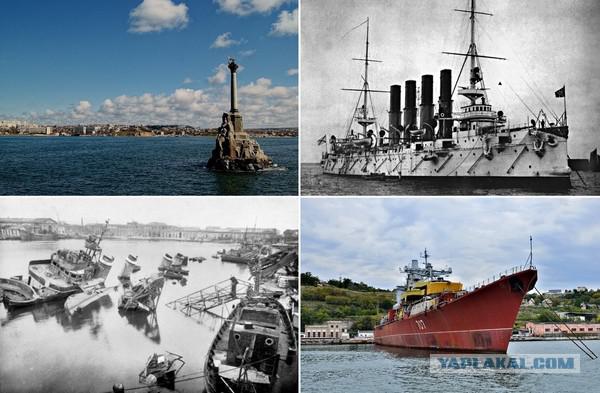
Flooding of Russian ships in Sevastopol. 1855
In the history of the Russian Navy's most famous such incident occurred in the years 1854-1855 during the Crimean War. This conflict provoked by Britain, France and the Ottoman Empire, from the outset was developed not in favor of Russia. Foreign troops landed in Yevpatoriya on the first day of fall 1854, quickly moved along the Crimean coast in the direction of Sevastopol. And on 20 September the battle of the Alma ended with the defeat of the Russian troops.
Russian commanders, realizing that the situation could become critical, ordered the flood at the entrance to Sevastopol bay a few old ships. While there has steam vessel and therefore eliminates the need for sailboats. They decided to let the water to cover the fleet of the interventionists the opportunity to enter the bay.
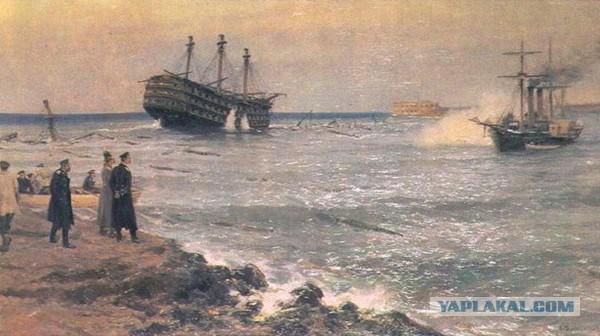
The first seven ships were sunk on 11 September. In November and December left the bottom two in February 1855 - six. And on August 27 it has been flooded the rest of the fleet - Russian troops left the southern part of the city. They returned there only in 1856, after the Paris Congress.
In 1905, in the bay of Sevastopol was a monument to the flooded ships - one of the business cards of the city.
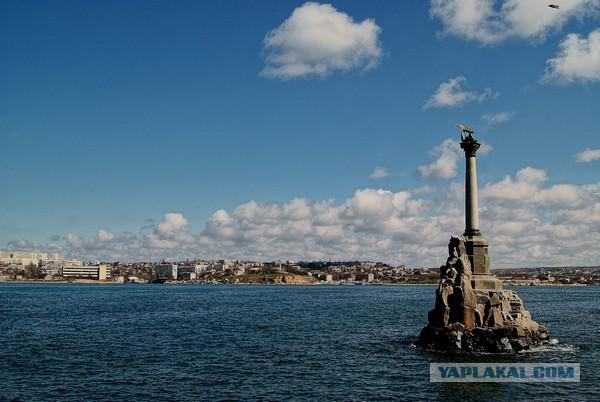
The cruiser "Varyag". 1904
No less famous case of deliberate flooding of Russian ships on 9 February 1904 in waters of the Korean port of Inch'on (now - Incheon). It was the first day of the Russian-Japanese war. At night, a few destroyers Japan conducted a torpedo attack on the Russian ships stationed in the outer roads of the city of Port Arthur, and in the afternoon the battle began between the cruiser "Varyag", supported by gunboat "Korean", and the Japanese squadron consisting of fourteen ships.
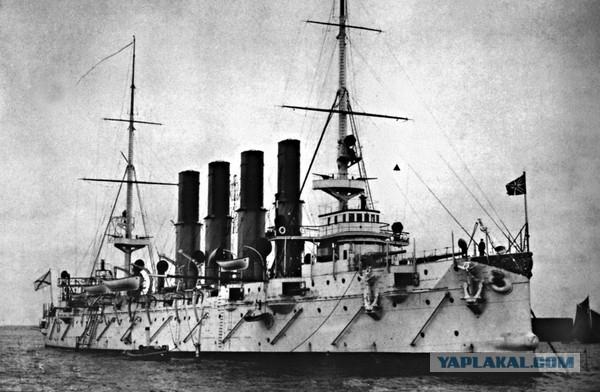
During a short unequal battle cruiser "Varyag" received a lot of damage, and 31 members of his crew were killed. Realizing that further resistance was impossible, the captain of the ship Vsevolod Rudnev ordered to return to the road in Inch'on, where the "Varyag" was flooded, and "Korean" - blown. Was put on the bottom was also a Russian steamer "Songhua River" is in port.
The feat of Russian sailors, the ship flooded, but do not pass their opponent, was enthusiastically received by all over the world, including in Japan, where the war even built a museum in memory of Russian heroes. The newspapers were full of news from different countries about the fate of the "Varyag" and our sailors took with honors along the entire length of the route home to St. Petersburg.
The song "The enemy does not surrender our proud Varyag", incidentally, is not of Russian origin, and German. The poem, which served as its basis, the Austrian poet wrote Rudolf Greynts explanations have been read in the press news. The work became known in Russia as a translation of Eugene Studensky. The music is composed by the musician of the 12th Astrakhan Grenadier Regiment Alexei Turishchev.
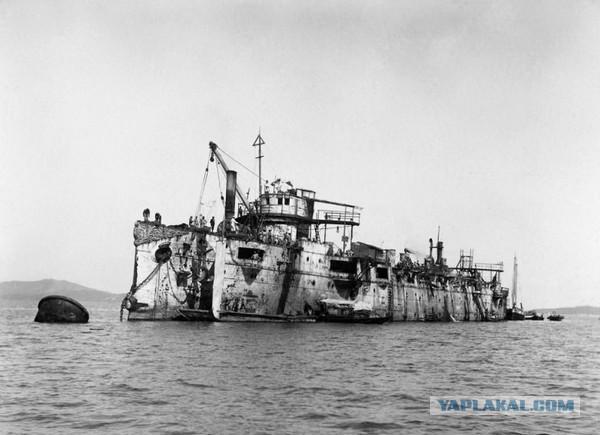
Flooding High Seas Fleet. 1919
And in 1919 for similar reasons have flooded their warships and Germans. The First World War turned to the defeat of Imperial Germany. A country that for centuries boasted the most powerful army in Europe, even lost the right to establish its own armed forces. A weapon is in its territory be transmitted to other countries. In particular, subjected to internment and the German High Seas Fleet - several dozen warships, considered the pride of Germany.
While the Allies decided the fate of each other Navy ships were in the harbor Rock Flow in the Orkney Islands, which at that time was located the main base of the British Navy. On the ship were German crew, and overall command of Rear Admiral carried Ludwig von Reuter. Last decided to sink his fleet on the eve of the signing of the Treaty of Versailles, he has not got to the Allies.
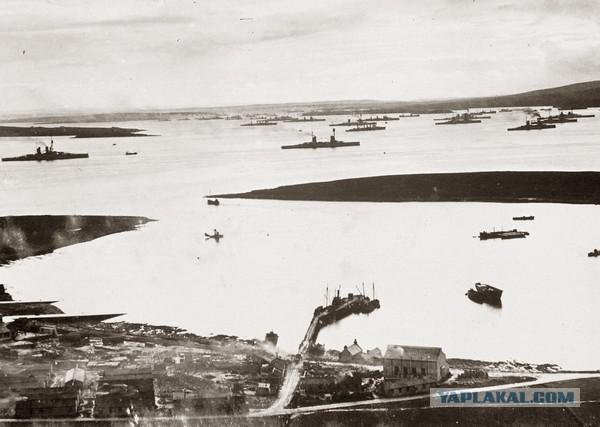
At 10:30 am June 21, 1919 von Reuter ordered the ships to sink all the High Seas Fleet. The sailors raised on their ships naval flags of Germany and opened Kingston. The British did not expect such a turn of events, and therefore did not manage to thwart German sailors. They managed to save only 22 vessels, 52 went under the water
Paradoxically, the British command took the news about the sinking of the German ships with great relief. After all, they no longer had to be divided among the allies that will get rid of much debate on this issue. In Germany, Ludwig von Reuter and his subordinates received as heroes.
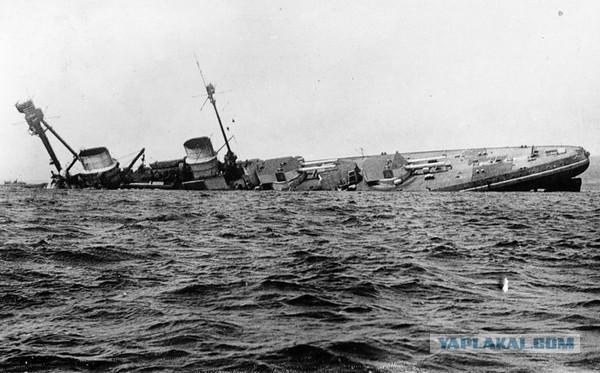
Source:
9 photo.

Flooding of Russian ships in Sevastopol. 1855
In the history of the Russian Navy's most famous such incident occurred in the years 1854-1855 during the Crimean War. This conflict provoked by Britain, France and the Ottoman Empire, from the outset was developed not in favor of Russia. Foreign troops landed in Yevpatoriya on the first day of fall 1854, quickly moved along the Crimean coast in the direction of Sevastopol. And on 20 September the battle of the Alma ended with the defeat of the Russian troops.
Russian commanders, realizing that the situation could become critical, ordered the flood at the entrance to Sevastopol bay a few old ships. While there has steam vessel and therefore eliminates the need for sailboats. They decided to let the water to cover the fleet of the interventionists the opportunity to enter the bay.

The first seven ships were sunk on 11 September. In November and December left the bottom two in February 1855 - six. And on August 27 it has been flooded the rest of the fleet - Russian troops left the southern part of the city. They returned there only in 1856, after the Paris Congress.
In 1905, in the bay of Sevastopol was a monument to the flooded ships - one of the business cards of the city.

The cruiser "Varyag". 1904
No less famous case of deliberate flooding of Russian ships on 9 February 1904 in waters of the Korean port of Inch'on (now - Incheon). It was the first day of the Russian-Japanese war. At night, a few destroyers Japan conducted a torpedo attack on the Russian ships stationed in the outer roads of the city of Port Arthur, and in the afternoon the battle began between the cruiser "Varyag", supported by gunboat "Korean", and the Japanese squadron consisting of fourteen ships.

During a short unequal battle cruiser "Varyag" received a lot of damage, and 31 members of his crew were killed. Realizing that further resistance was impossible, the captain of the ship Vsevolod Rudnev ordered to return to the road in Inch'on, where the "Varyag" was flooded, and "Korean" - blown. Was put on the bottom was also a Russian steamer "Songhua River" is in port.
The feat of Russian sailors, the ship flooded, but do not pass their opponent, was enthusiastically received by all over the world, including in Japan, where the war even built a museum in memory of Russian heroes. The newspapers were full of news from different countries about the fate of the "Varyag" and our sailors took with honors along the entire length of the route home to St. Petersburg.
The song "The enemy does not surrender our proud Varyag", incidentally, is not of Russian origin, and German. The poem, which served as its basis, the Austrian poet wrote Rudolf Greynts explanations have been read in the press news. The work became known in Russia as a translation of Eugene Studensky. The music is composed by the musician of the 12th Astrakhan Grenadier Regiment Alexei Turishchev.

Flooding High Seas Fleet. 1919
And in 1919 for similar reasons have flooded their warships and Germans. The First World War turned to the defeat of Imperial Germany. A country that for centuries boasted the most powerful army in Europe, even lost the right to establish its own armed forces. A weapon is in its territory be transmitted to other countries. In particular, subjected to internment and the German High Seas Fleet - several dozen warships, considered the pride of Germany.
While the Allies decided the fate of each other Navy ships were in the harbor Rock Flow in the Orkney Islands, which at that time was located the main base of the British Navy. On the ship were German crew, and overall command of Rear Admiral carried Ludwig von Reuter. Last decided to sink his fleet on the eve of the signing of the Treaty of Versailles, he has not got to the Allies.

At 10:30 am June 21, 1919 von Reuter ordered the ships to sink all the High Seas Fleet. The sailors raised on their ships naval flags of Germany and opened Kingston. The British did not expect such a turn of events, and therefore did not manage to thwart German sailors. They managed to save only 22 vessels, 52 went under the water
Paradoxically, the British command took the news about the sinking of the German ships with great relief. After all, they no longer had to be divided among the allies that will get rid of much debate on this issue. In Germany, Ludwig von Reuter and his subordinates received as heroes.

Source:




